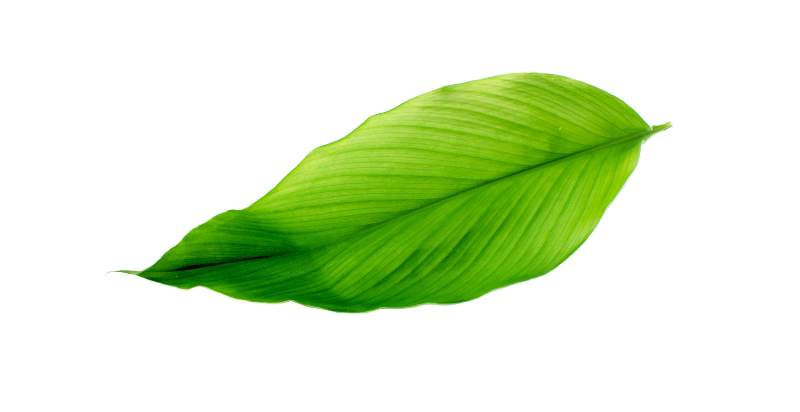Turmeric leaves are an incredibly versatile ingredient found in many cuisines and dishes throughout Asia. The leaves have a distinct flavor profile, often described as smoky and slightly pungent with hints of citrus.
In addition to their unique taste, they contain several essential nutrients such as Vitamin A, B-complex vitamins, calcium, iron, magnesium, and zinc. Furthermore, these have been used in traditional Ayurvedic medicine for centuries to treat various ailments, such as inflammation and digestive problems.
Description / Taste:
Turmeric leaves are long and thin, averaging fifteen to twenty centimeters long. The texture of the leaves is slightly rough with a pale green hue. When cooked or dried, the flavor of the leaves intensifies, developing a smoky, earthy quality with subtle notes of citrus.
Seasons / Availability:
Turmeric leaves are available year-round. However, they are most abundant in the spring and summer months.
Geography / History:
Turmeric leaves are native to India and South Asia. They have been used in traditional Indian cuisine for centuries and are now being embraced by many other cultures worldwide.
Applications:
These leaves can be used in a variety of ways. They are commonly used as an aromatic component in soups, curries, and stews. They can also add flavor and texture to salads or dishes requiring long cooking, such as dal. Additionally, the leaves can be dried and ground into a powder for use in spice blends and marinades. Dried and ground leaves can also be brewed into a tea for added flavor and health benefits.
Storage:
Fresh turmeric leaves should be stored in an airtight container or plastic bag and kept in a cool, dry place for up to five days. Dried leaves can be stored for longer periods.
Nutrition Values of Turmeric Leaves:
These leaves are rich in essential vitamins and minerals, providing numerous health benefits. They contain Vitamins A and B-complex vitamins which help boost immunity, reduce inflammation, and promote healthy skin. Additionally, these are packed with minerals such as calcium, iron, magnesium, and zinc, which help to strengthen bones, improve digestive health and support the immune system.
Health Benefits:
Turmeric leaves are widely regarded for their medicinal properties. The anti-inflammatory compounds in turmeric have been shown to help reduce inflammation related to arthritis, headaches, and other conditions.
Furthermore, they can also be used to treat digestive problems such as indigestion and constipation due to their high fiber content. In addition, turmeric has been known to boost immunity by increasing the production of white blood cells and protecting against harmful bacteria and viruses.
Cooking With Turmeric Leaves:
Due to their unique flavor profile, turmeric leaves are used extensively in Indian cuisine. They can be added to curries, stews, and soups for an extra layer of flavor and nutrition. Additionally, they are often used as a garnish on dishes such as rice or dal to add more color and texture. It can also be cooked with other ingredients, such as garlic and onions, to create a flavorful paste that is great for marinades and sauces.

How to Use Turmeric Leaves?
Turmeric leaves can be used in various dishes as a garnish or to add flavor. They are often used similarly to bay leaves by adding them to curries and soups while cooking. The leaves can also be dried and ground into a powder for spice blends, marinades, and sauces. Additionally, they can be brewed into a tea with other herbs, such as ginger or cinnamon, for added flavor and health benefits.
No matter how you use turmeric leaves, the smoky and citrusy flavors will add an interesting twist to your meals! Enjoy exploring the unique flavors of this versatile ingredient!
Conclusion:
Turmeric leaves are a flavorful and versatile ingredient in various dishes to add flavor and nutrition. With their smoky, earthy flavors and many health benefits, turmeric leaves are an excellent addition to any dish! So get creative in the kitchen and enjoy exploring the unique flavors of this ancient spice today!
- Everything You Wanted to Know About Red Tamarillos - June 2, 2025
- A Guide to Tulips: Everything You Need to Know & More… - June 2, 2025
- Guanabana: Description, Flavor, Benefits, And Uses - May 27, 2025

1 thought on “Turmeric Leaves: Benefits, Nutrition Values And Uses”
Comments are closed.